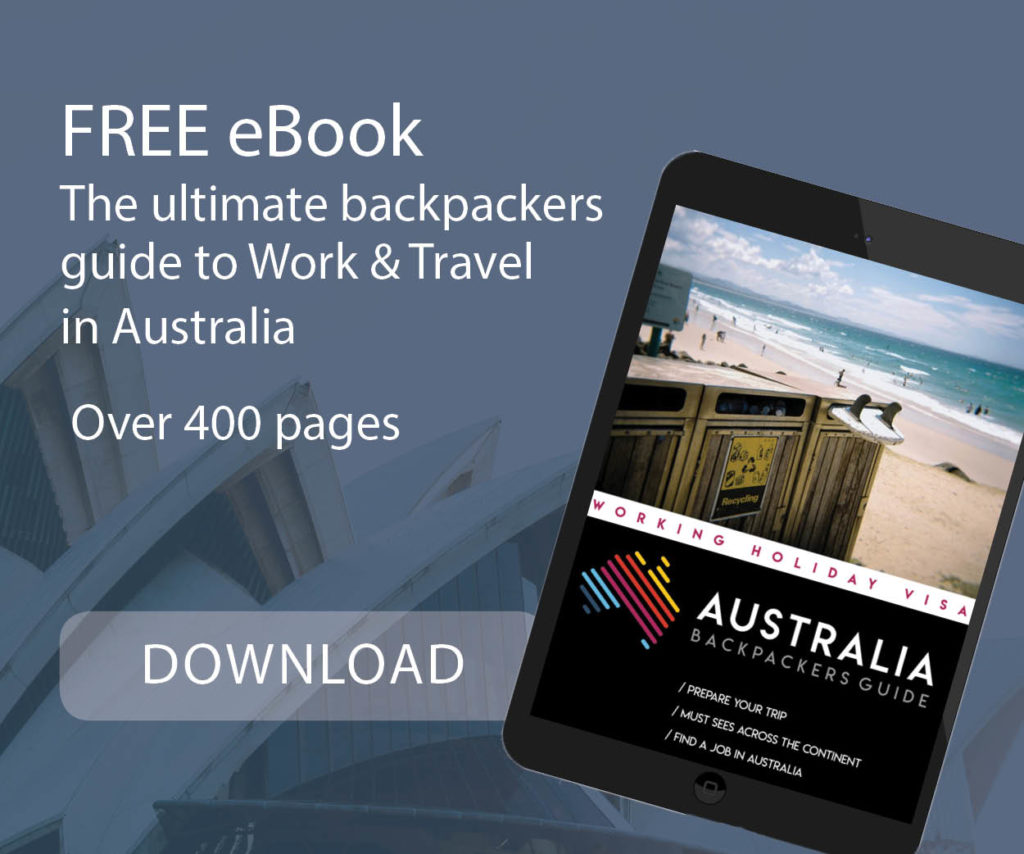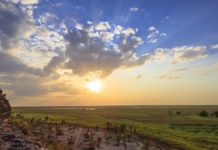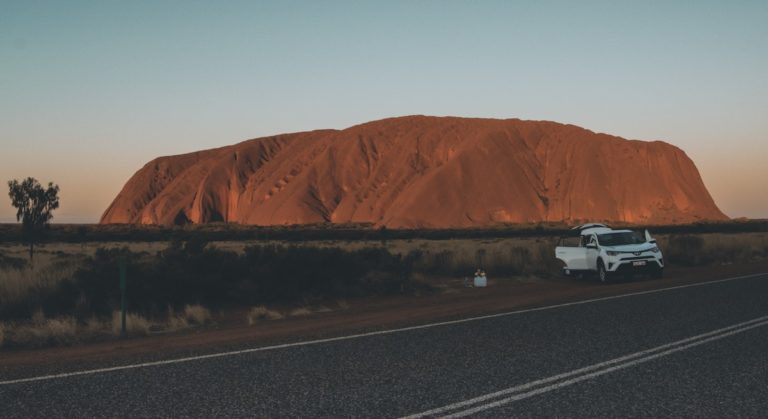
Discover the heart of Australia’s Red Centre with this action-packed guide to exploring Uluru and Kata Tjuta in just two days. From sunrise at the rock to stargazing under the Milky Way, here’s everything you need to plan the perfect adventure.
Table of Contents
Uluru Kata-Tjuta National Park
Sacred mountain to the Aboriginal people (the Anangu), Uluru is the main attraction of the Uluru Kata-Tjuta (Olgas) National Park, a UNESCO World Heritage Site. 500 million years old, the rock of Uluru is 3 kilometers long and more than 9 kilometers in circumference. It rises 348 meters high, with most of the rock lying underground.
Ayers Rock was the most commonly used name until 1993 when the rock was officially renamed Ayers Rock/Uluru.
Sunrises, sunsets, rugged hikes, and night-sky photography make this bucket-list territory.
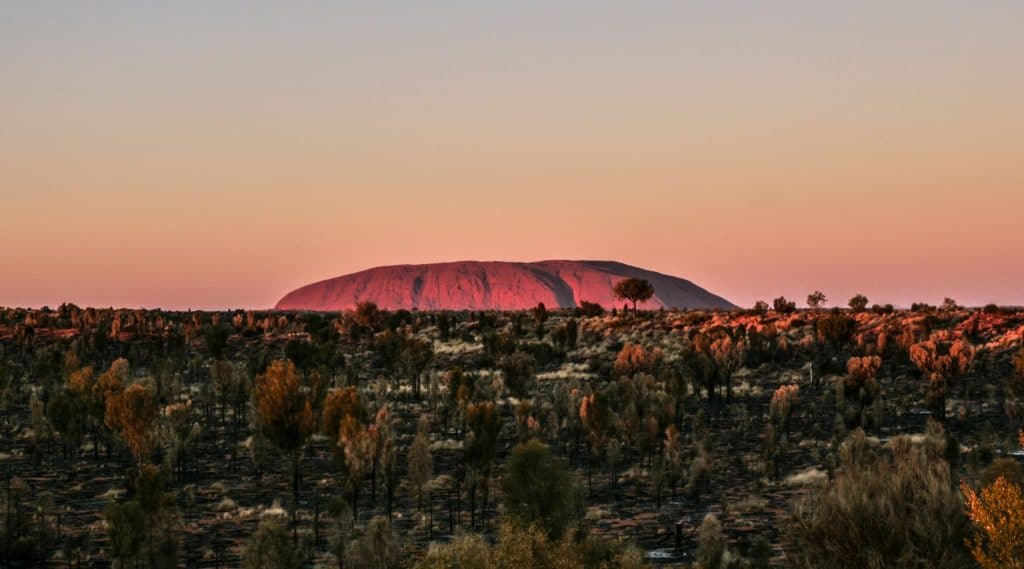
Before You Go: Practical Tips
- Park Entry: Costs AUD 38 per adult for a 3-day. You can purchase online or at the entry of Uluru Kata Tjuta National Park (gates).
- Best Time to Visit: April–May & September–October for mild temperatures (20–30 °C) and clear skies. It rains very little and the cool weather makes the walks easier. The months of October to March (spring – summer) can be extremely hot, with daytime temperatures above 35°C. However, the warm weather also brings thunderstorms and rain, which fills the waterholes and kicks off the Uluru waterfalls – spectacular!
- Dress & Gear: Sturdy walking shoes, sun-hat, sunscreen, water (3 L/day), and a lightweight jacket for cool mornings/evenings.
Uluru Highlights – Day 1
Morning: Uluru Sunrise & Base Walk
- Sunrise at Talinguru Nyakunytjaku
- Spectacular 360° lookout with dedicated viewing platforms.
- Arrive 30 min before sunrise (approx. 5:30 am) for changing colours.
- Uluru Base Walk (10.6 km loop): Easy flat trail hugging the rock’s base; allow 3–4 hours.
- Mutitjulu Waterhole: Spot native birds and ancient rock art.
- Take a ‘free guided tour‘ led by a ranger. The appointment is at 10am from the Mala walk. The tour takes around four hours total. Three hours for the guided base walk another 45 minutes to an hour for the ride with the ranger.
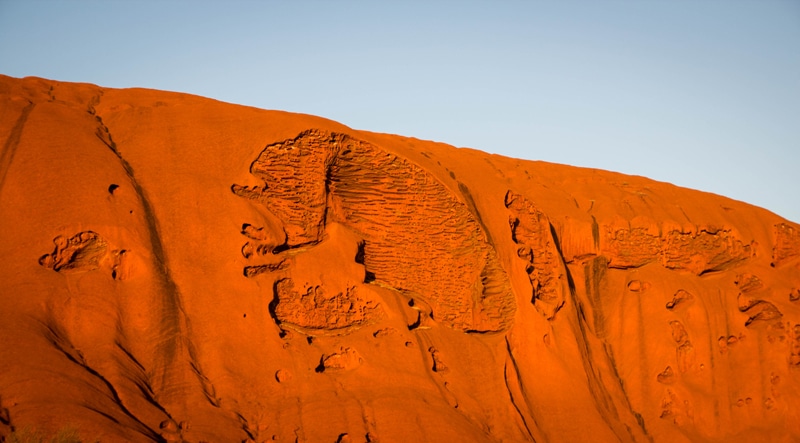
Midday: Cultural Centre & Lunch
- Uluru-Kata Tjuta Cultural Centre
- Free entry; exhibits on Anangu history, bush foods, and Tjukurpa law.
- Purchase authentic Aboriginal art and crafts. The profits are shared with the Aboriginal people owners of this place, unlike Yulara.
- Picnic Lunch: Grab supplies from the Village Shops or pack your own; shaded picnic tables available.
Afternoon: Sunset at Uluru
- Kuṟtṯa Track Lookout with its panoramic views; great for photography as the rock glows red and orange.
- Field of Light (Optional Add-On): Bruce Munro’s solar-powered light installation (book in advance).
🚐 Rent a Cheap Campervan
Our tips and discounts to rent a cheap campervan in Australia.
Kata Tjuta (Mount Olgas) & Stargazing – Day 2
About 30 kilometers from Uluru are the Kata-Tjuta (or Olgas). These rounded rock formations, less known than their neighbour Uluru, are no less impressive.
Early Morning: Sunrise at Kata Tjuta
Join a Sunrise Viewing Area (Sunrise approx. 6:00 am) to watch the domes light up behind you as the sun rises; quiet and reflective.
Morning Hike: Valley of the Winds
The entire walk spans 7.4 kilometers and is clearly signposted. Despite some elevation, it’s quite manageable for most fitness levels. This path takes you into the core of the rocks, offering stunning vistas where only birds might interrupt the tranquility. It’s best to embark on this trek in the morning to avoid the heat, and remember to carry water with you. There are two water refill stations along the route. It’s important to stay hydrated, as we often don’t notice how much we are sweating!
If you’re not up for the entire loop, that’s fine. There are two scenic points you can visit: The Karu Lookout, which is a 2.2 km return journey, and the Karingana Lookout, with a 5.4 km round trip.
Near the parking area, you’ll find shaded picnic tables perfect for a lunch break. Afterwards, if you’re up for more, consider exploring the Walpa Gorge, an easy 2.2 km return walk.
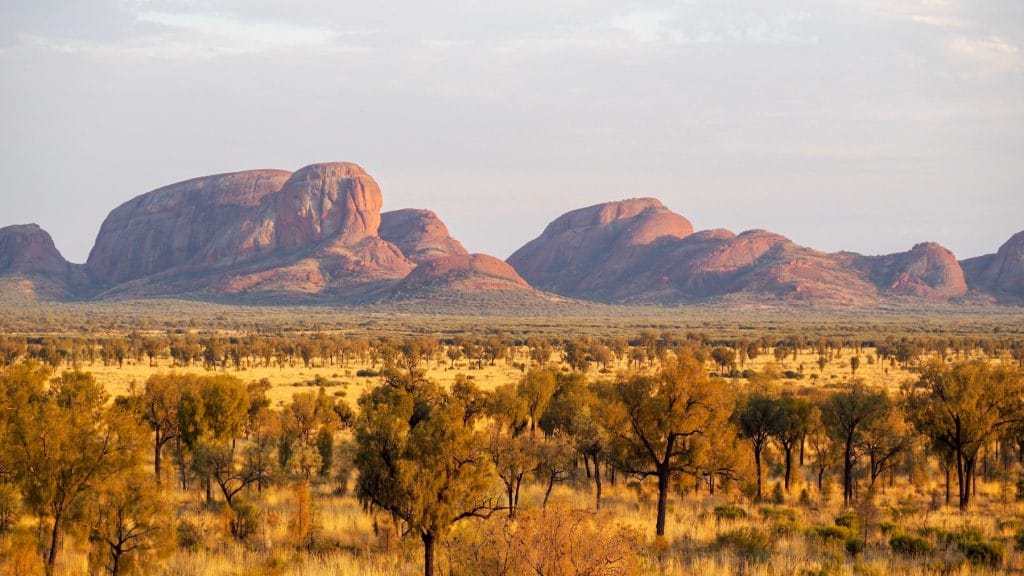
Afternoon: Optional Extensions
- Sunset Camel Tour: Ride over red dunes as Uluru glows (2 hrs; book early).
- Helicopter Flight: 30-minute aerial tour for bird’s-eye views of Uluru & Kata Tjuta.
- Guided Dot‐Painting Workshop: Learn the art form and its cultural significance.
Activities at Yulara (free)
If you have walked enough for the day, Yulara offers plenty of free activities such as discovering the ‘bush-tucker’ (food from nature), learning about planting and using plants, astronomy exhibitions and theatre.
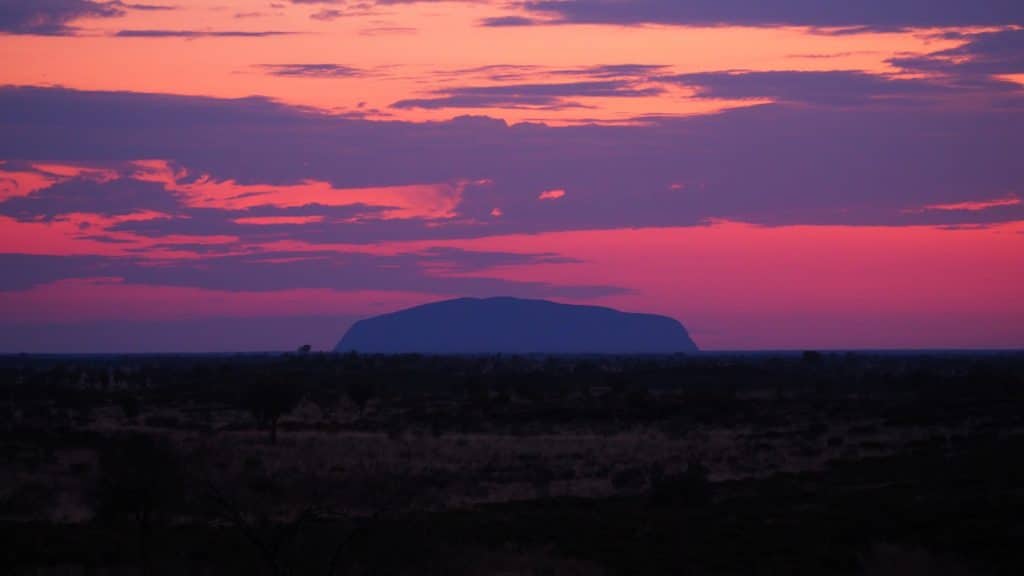
Sunset on the Kata-Tjuta
Only thirty kilometres from the resort you will find an alternative for the evening. There is a beautiful lookout (Sand Dunes view) to see the sunsets on Kata-Tjuta (with Uluru in the distance). As the shadows of the trees grow longer you will see the rocks turning all shades of red. At this moment everything is ablaze, even the sky!
Option: Dark Sky Tour: Perfect end to your Red Centre journey. Listen to Aboriginal astronomy stories and view the Milky Way through telescopes.
💰 10% discount on your insurance policy
Find here all the information you need and get your 10% Go walkabout promo code for any policy.
Accommodation Guide
The pass to enter the park is valid for 3 days. You will therefore have to find accommodation not far from the national park to avoid traveling too much each day and wasting time.
There is no accommodation in Uluru-Kata Tjuta National Park. The accommodations (campsite, hotel, lodge, etc.) are located in the Ayers Rock complex in Yulara. In addition to accommodation, you will find shops, restaurants and many places to visit on site. Ayers Rock Campground will offer you all the necessary facilities for a comfortable stay (from $45 without electricity in a tent or $190 a night for 2 in a cabin).
Another option, if you continue to drive on Hwy/State Route 4, less than 1 hour from Yulara, the town of Curtin Springs offers the unique experience of camping on a breeding station in full operation.
There is another free option. North of Yulara is a free campsite. If you do not have Wikicamp, just pass Yulara, the mechanic’s road, the airport and after 9km you will see on your right a small sandy road. Do not hesitate to take the road as it is accessible to 4WD as well as 2WD vans. If you have a 4WD you can ride the dunes which offers a breathtaking view of Uluru and Kata-Tjuta. If your vehicle can not deal with this kind of off roading climb on foot and mount your tent up in the dunes! The nights can be a bit chilly, but seeing the sunrise, sunset as well as the Milky Way stretching over Uluru will make you forget everything.

Practical Info
In Yulara, you have an IGA supermarket, restaurants, cafes and everything you might require to stock up. There is also a gas station, keep your IGA receipt if you shop there as it entitles you to a discount of 4ct on the next full tank!
If you are lazy one night and what a barbecue we tested the Outback Pioneer Kitchen. For 35 AUD you will have an assortment of meat (kangaroo, emu, crocodile) and access to the salad bar. It also has live music.
You can observe Dingos, various reptiles, kangarous and emus.
You can compare offers from different companies on www.motorhomerepublic.com
The roads leading to the tourist sites are paved. Only the Mereenie Loop Road that connects Alice Springs to Kings Canyon is a trail and requires a pass to ride on.













